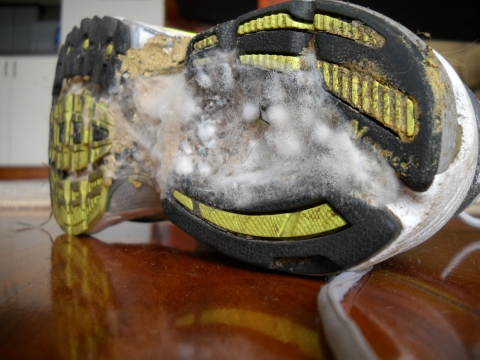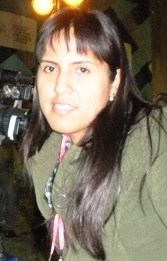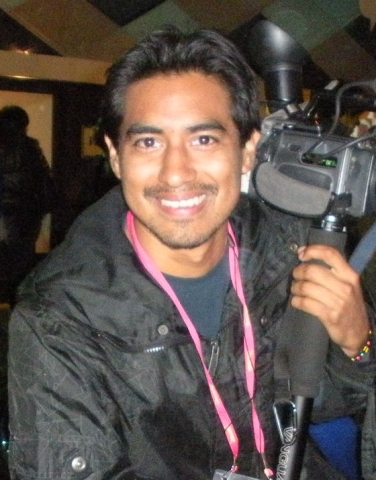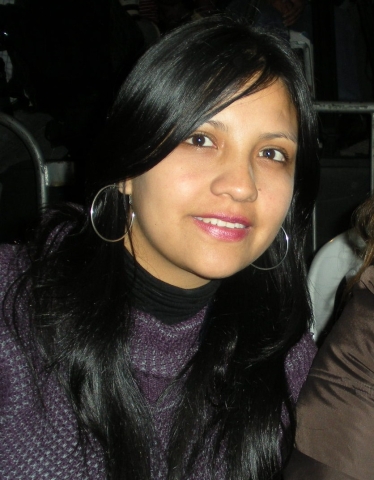
48-hour mold

Janeth Sarmiento

Miguel Piscoya

Yovany Quintana
The first step in establishing a permanent training system in Peru takes place, as the nine stations are close to coming on board.
I love to run, something I’ve continued to do in Peru. But I never expected to find THIS growing under my shoe a mere 48 hours after my last outing! Mold. It’s one of the biggest problems in Lima, a city with one of the highest asthma levels in the world. But what really surprise me was how fast it grew. If only the rest of business in Peru moved as quickly...

48-hour mold
After almost three months of negotiating, the nine stations from Red TV that will participate in the year-long training have been chosen. Red TV wanted all 36 member stations trained, however since this is a pretty intense, one-on-one coaching approach, it just isn’t possible to accommodate everyone. I am one trainer, and I only have a year.
The stations selected were chosen based on how much they contribute to the national newscast Enlace Nacional, produced by TV Cultura in Lima. They also have to show low employee turnover, as well as be distributed between the Sierra, the Coast and the Jungle regions. We're still waiting to hear if they will participate since they also have to agree to one element.
The main goal of the Fellowship is to establish a permanent training system for Red TV. Oftentimes trainers come, conduct a few workshops, and then leave. How much of an impact are they really having? So, I’ve selected three outstanding journalists to become my 'Trainers-in-Training': a team that can be dispatched to any of the stations, provide support when needed, and serve as station liaisons... long after I'm gone. One of them will always be traveling with me on my trip to the stations to learn and help with the coaching, so my challenge is two-fold: train those at the stations, while making sure my little team continues to be mentored.
The three were chosen from production house TV Cultura. Each and every one of them impressed me with their dedication, how quickly they've learned, and their commitment to the project:
Janeth Sarmiento is a producer at Enlace Nacional. She’s 29-years old from Lima, and has a degree in Journalism and Advertising. She just came back from her second trip to Berlin at the invitation of German broadcaster Deutsche-Welle. She has a sharp editorial mind, is a fast writer, and has full knowledge of what makes a good newscast.

48-hour mold
Miguel Piscoya is also 29, and hails from Piura, near the border with Ecuador. He’s my technical support. He’s a reporter, photographer and editor with a degree in Communication. His charming personality and eye for visual composition make him a key member. His ideas on how to integrate the journalists using Facebook, Twitter and the web will be fruitful for the network.

48-hour mold
Yovany Quintana is 24 years old, and comes from Cajamarca, in northwestern Peru. She just graduated in May with a degree in Journalism. She’s _Enlace Nacional's_anchor/reporter, and has demonstrated that she’s a quick study and an excellent writer. She also came up with the idea to create a “Welcome Manual” for the stations listing the guidelines on what’s expected of them.

48-hour mold